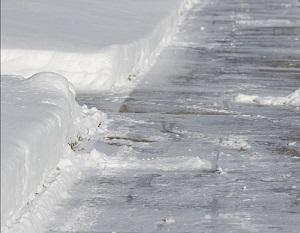Connecticut Snow Removal Laws and Potential Liability
 Winter in the northeast United States is generally characterized by sub-freezing temperatures and seasonal snowfall best measured in feet. Travel, of course, can be become very dangerous, and weather-related auto accidents are extremely common. Slip and fall accidents usually increase during the winter months as well, with snow- and ice-covered parking lots, sidewalks, and stairs often causing serious injury. When such accidents occur, who should be held liable for the resulting injuries? The answer depends on many factors, including where the incident took place and who was involved.
Winter in the northeast United States is generally characterized by sub-freezing temperatures and seasonal snowfall best measured in feet. Travel, of course, can be become very dangerous, and weather-related auto accidents are extremely common. Slip and fall accidents usually increase during the winter months as well, with snow- and ice-covered parking lots, sidewalks, and stairs often causing serious injury. When such accidents occur, who should be held liable for the resulting injuries? The answer depends on many factors, including where the incident took place and who was involved.
Roadway Snow and Ice
According to Connecticut law, individual municipalities including cities and towns have the authority to create their own local policies regarding snow and ice removal. The state does provide recommended provisions but permits each municipality to adopt and adapt them as it sees fit. The Connecticut Department of Transportation is statutorily tasked with clearing snow from state highways to ensure safe travel, while local and city roads are the responsibility of each city or town.
While not totally impossible, it is extremely difficult to seek compensation from the state or a municipality when you are injured in a weather-related car accident. To do so, you would need to show that the snow or ice that caused your accident remained on the road due to the wanton, reckless, or malicious actions or negligence of the government or its employees. Keeping up with falling snow and accumulating ice can be a monumental task, negligence is very rarely—if ever—a factor.
Snow-Covered Sidewalks
Walkways, sidewalks, and parking lots, however, present a very different set of circumstances. While local statutes may vary to a degree, most municipalities place responsibility for snow and ice removal from sidewalks on the owner or occupant of the land that abuts the sidewalk. Walkways and parking lots on private property are the responsibility of the property owner as well. Such areas on municipal property, as well as the sidewalks that abut municipal property, are usually the responsibility of the municipality.
The city of Hartford, for example, requires property owners to remove sidewalk snow and ice—or place sand on top of unremovable ice—within six hours after the end of a snowfall. If the snow falls during the night, property owners have three hours after sunrise in which to make the sidewalk safe. Failure to do so could leave the owner subject to a citation and a $99 fine, which repeats for each day in violation. The violation of a city ordinance also opens the property owner to liability if a person is injured as a result of unremoved snow or ice, based on the principle of negligence per se. Similarly, if a person is injured in a fall in a snow-covered parking lot, the property owner could be held liable for the injuries.
Injured in a Winter Accident?
If you have fallen and were injured on another person’s property, or were the victim of a weather-related car accident, contact an experienced Hartford personal injury attorney. Call 860-290-8690 for a free, no-hassle consultation at the Woolf & Ross Law Firm, LLC, today. We will help you explore your options for collecting compensation and work with you in ensuring that your rights are fully protected.
Sources:
https://www.cga.ct.gov/2011/rpt/2011-R-0076.htm
http://www.ccm-ct.org/sites/default/files/files/Municipal_Snow_Removal_Policies.pdf






